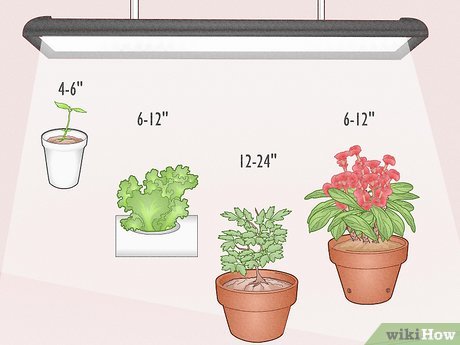You might be wondering: “Is White LED light good for plants?” There are several arguments against LED lights. While some plants may do better with green light, others will do well with infrared lights. Infrared lights are especially useful for growing plants, as they can boost stem strength and stimulate flowering. However, some plants will struggle with LED lights and will go into dormancy.
Green light stimulates plant growth
In studies conducted on plants, it has been found that green light induces physiological changes such as widening of leaves and benign stomatal closure. NASA conducted tests on different growlights, and they found that those emitting the full spectrum of red, blue, and green light had better crop yields and dry mass than pure blue or red light. According to McCree, 1972, green light stimulated the most photosynthetic activity.
According to Cope and Bugbee, green light has several benefits for plant growth. It penetrates deeper into plant tissues, providing extra photosynthesis. Despite this fact, they did find that the lettuce that received pure green light was weaker than those grown under the RGB spectrum. These experiments suggest that the benefit of green light is species dependent, since some plants lack photopigments and phytochemicals that are essential to photosynthesis.
Infrared light stimulates flowering
Researchers have investigated the use of Infrared light (NIR) to induce flowering in plants. The study used strawberry plantlets grown in hydroponics. They exposed them to NIR of 800 to 950 nm, a wavelength range that is similar to the visible spectrum. After 30 days of exposure, they measured the fresh and dry weight of the plants to determine whether they had increased or decreased their accumulation of biomass. The results show that NIR + white light accelerated flowering in the plants.
Infrared stimulates flowering in plants by manipulating the senses of the plants. Its chemical properties are known as phytochromes, which react strongly to infrared light. Plants can be grown and harvested throughout the year using this technology because of its ability to simulate outdoor light conditions. Plants receive IR from lights, and they don’t need seasonal sunlight to receive it.
Infrared light enhances stem strength
Infrared light has a variety of health benefits. It can stimulate the growth of stem cells and promote cell viability. It also has anti-inflammatory and anti-apoptotic properties. Recent research indicates that infrared light has therapeutic benefits in the human body. It can be delivered without an external power source. The heat produced by the human body drives the emission of FIR from minerals in the soil.
IR is absorbed by CCO and water molecules. When the light reaches the tissue, it causes oscillations in these materials. When it reaches a specific wavelength, it interacts with the cell’s mitochondria, which provide energy and regulate the activity of various enzymes. This allows the stem cells to develop into specific types of muscle tissue. It can also activate stem cells and guide their differentiation to become the final healthy muscle tissue.
Infrared light causes discoloration of leaves
Infrared light can cause the discoloration of leaves. Leaves that have a high water content absorb all wavelengths longer than 1400 nm, decreasing reflectance throughout the spectrum. Fig. 14.1 shows leaves with a high water content; a larger amount of water reduces reflectance across the spectrum. Interestingly, the leaves showed a small absorption near 1800 nm, which was associated with cellulose and related structural C (C) compounds.
Leaf reflection patterns in the visible spectrum are primarily caused by pigments produced by photosynthetic plants. These pigments absorb approximately 90% of the incoming light. The second-strongest absorbing molecule in leaves is water. It absorbs strongly in the SWIR region, and smaller amounts of NIR energy through vibrational overtone absorption. Infrared light causes discoloration of leaves and a number of other effects, including accelerated photosynthesis.
